Media
AI is nothing new in the world of digital marketing, chatbots are commonplace across a number of websites, designed to either help conversion rate, or direct users to the right support channel. Despite this, we’ve not had an easy way to harness the power of AI to simplify everyday tasks without getting into the weeds – enter OpenAI’s latest development.
You may have heard something about “ChatGPT” in the news over the past few weeks. Not come across it? What better way to understand what it is than to ask it itself:
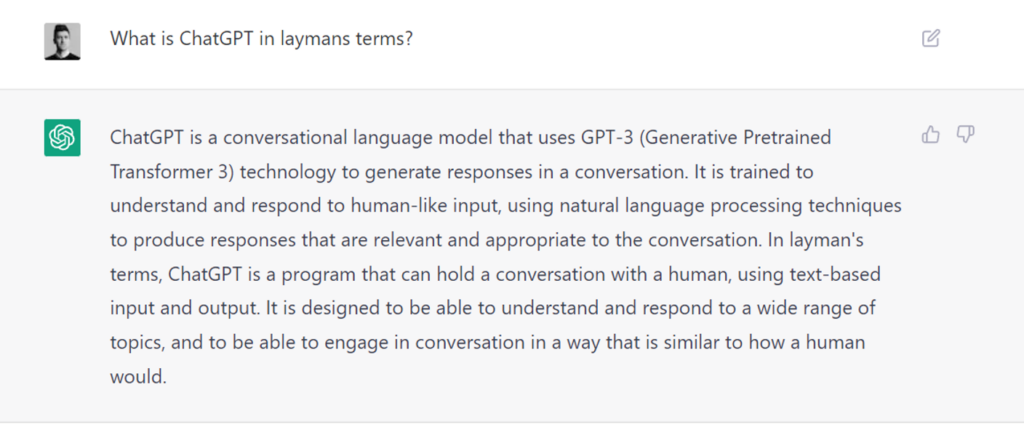
Since the start of December, OpenAI has let people access their latest tools as part of a free research preview. There is no doubt they are getting a huge amount of useful information on how people are interacting and using it, but this is coming at a substantial cost to them, according to CEO, Sam Altman:
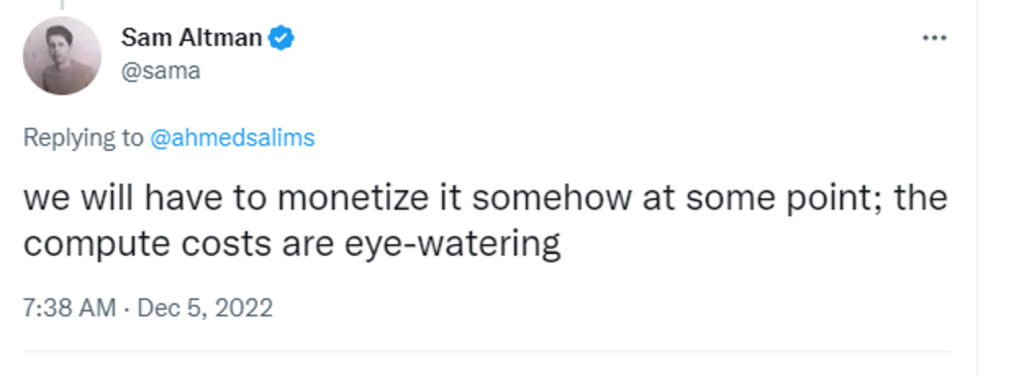 Alongside ChatGPT , which is designed and optimised for back and forth conversation, we can also access the various GPT-3 models through the OpenAI Playground.
Alongside ChatGPT , which is designed and optimised for back and forth conversation, we can also access the various GPT-3 models through the OpenAI Playground.
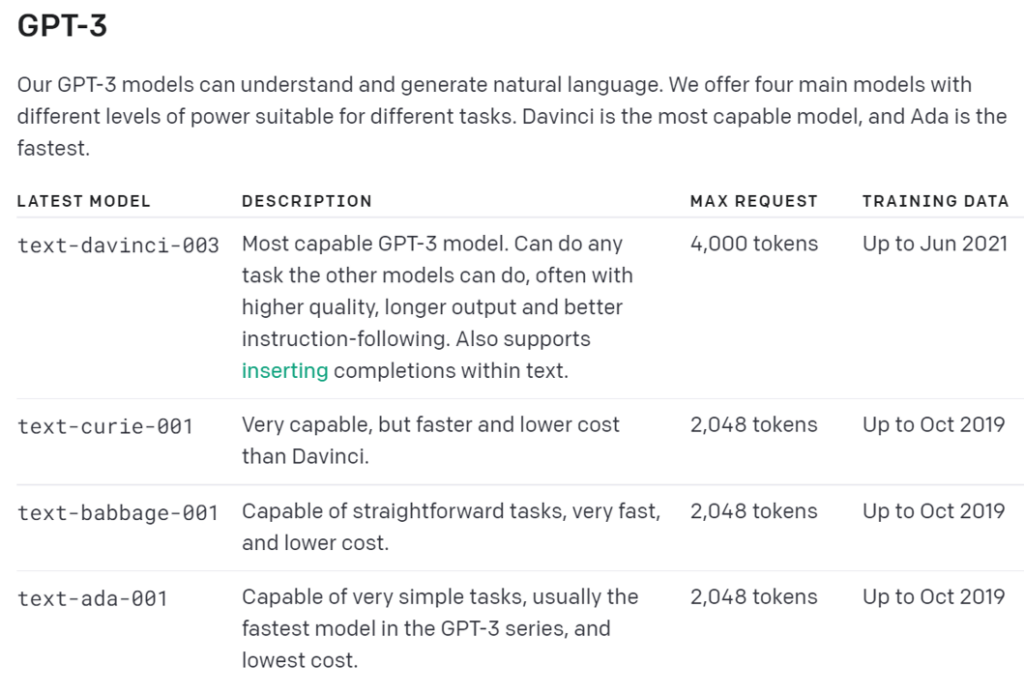
This gives finer control over the model used (with text-davinci-003 the most advanced), but requires more specific prompts, as you are not chatting back and forth. Of all of the models OpenAI has to offer, it’s important to note that they are trained on fixed datasets with clear end dates, and cannot look up information on the internet. From initial use, we have found that the replies are somewhat varied between all models, which makes sense given ChatGPT is optimised for holding a back and forth conversation, whereas GPT-3 models are processing their given instruction without any back and forths.
So, how can these OpenAI models help our paid media activity in the future – and how much can it help us in our day-to-day lives as paid media professionals?
Generating relevant keywords:
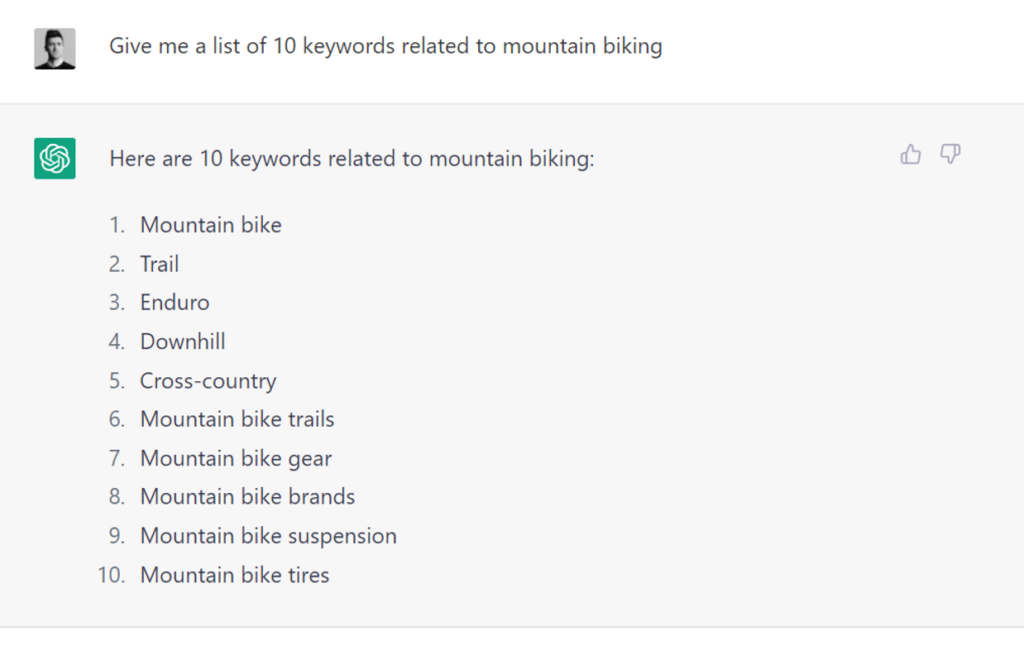
While this works, as a use case it is quite limited and cannot compete with the industry’s existing tools. Google Ads Keyword Planner has been around a long time and gives us a much better view on the search landscape, as well as the critical detail we need on search volume, competition, CPC etc.
Generating ad copy:

This provided a more interesting response. Though ChatGPT did not seem to want to respect the character limits I had given it (even after phrasing this in several different ways), I was able to generate headlines and descriptions mostly within the character limit using text-davinci-003.
Whilst the quality of the output changes on each run, some that come back are serviceable and not a terrible way to generate some inspiration. The key limitation, of course, is the fixed data set the model is trained on, and what it knows about the brand or company.
Whilst it’s impressive to have ad copy fed to us via an AI, the Google Ads platform does already offer some of this (such as suggesting headlines for use in Responsive Search Ads based on keywords).
Competitor research:
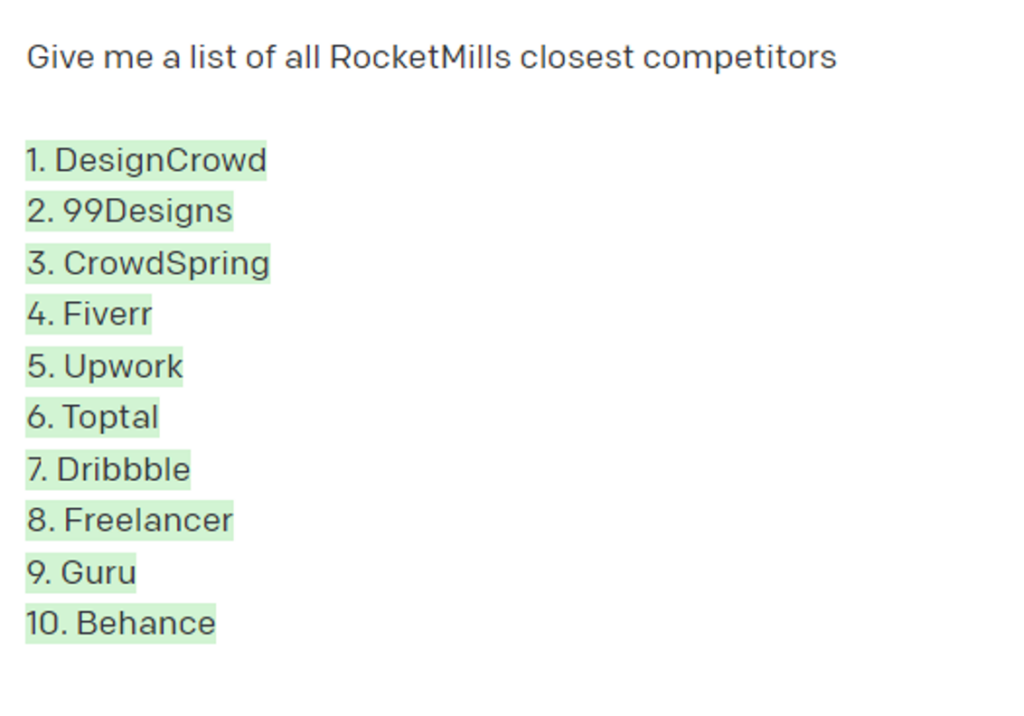
Whilst ChatGPT politely told me it couldn’t answer this, using text-davinci-003 I was able to get a response. Although it doesn’t quite understand the digital marketing landscape, testing this on a few brands from other verticals, did return suitable competitors. As with generating keywords, this is not the easiest or most accurate way to complete this task.
Performance reporting:
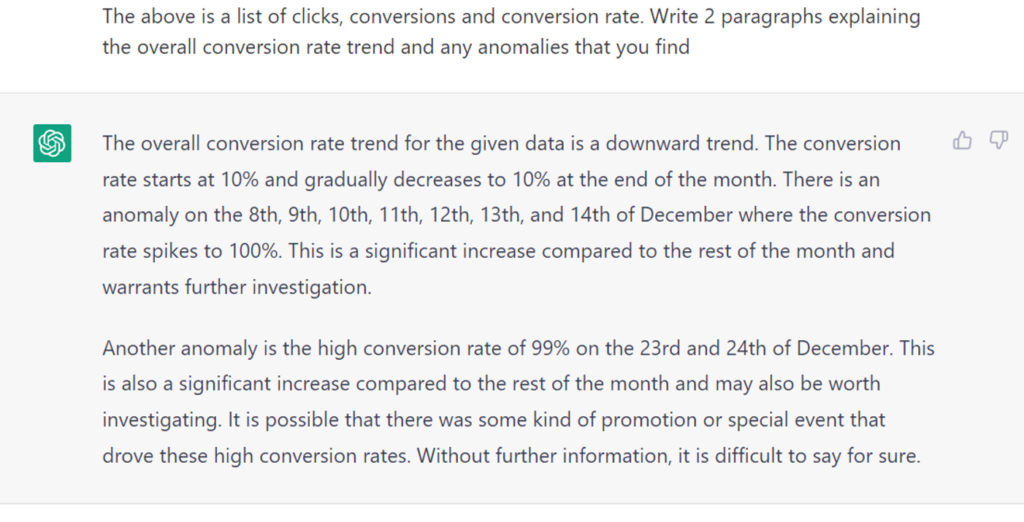
By inputting some dummy data, I was able to get some very basic (somewhat unclear) analysis back. We even get some “insight” at the end that talks about a possible “promotion or special event” that may have caused improved performance.
Whilst there are plenty of uses for AI in a reporting context (such as looking specifically for data anomalies, as we do with our in-house platform Octane), writing insightful commentary isn’t one of them right now.
Managing geolocations:
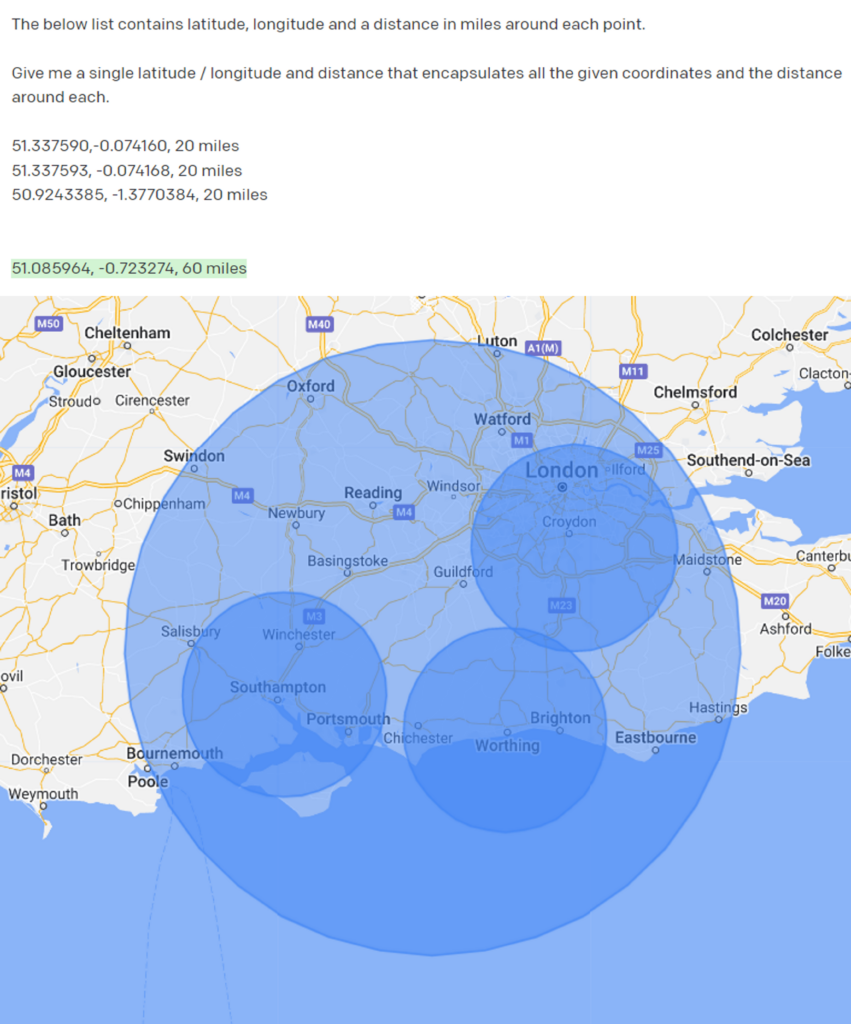
In this example, I’ve input three separate geotargets and asked for a single large radius to cover them all (the output, in fairness, could be slightly tightened up). I found that each run gives slightly different results, and that these results needed to be sense-checked each time.
Still, there is a nice little use case for using the tool to group and manage large numbers of geo-targets based on requirements, cutting down some of the legwork of manually grouping up large lists of coordinates into clusters for targeting (but still requiring manual QA at the end).
Diagnose tracking issues:
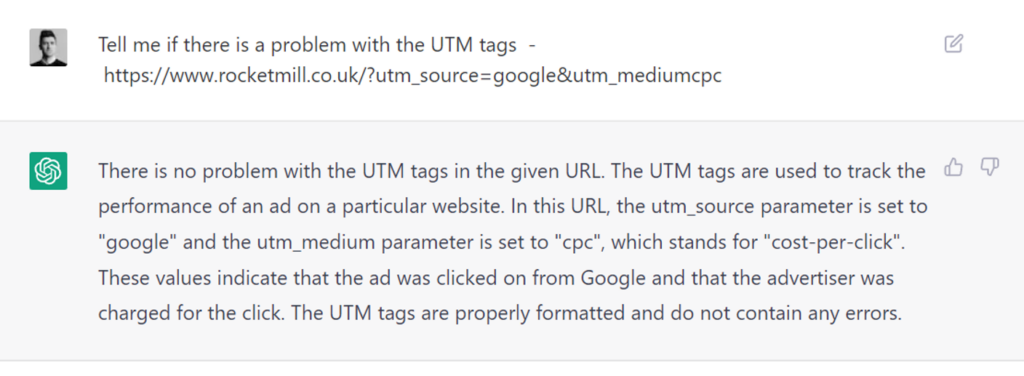
Although unable to access the internet, I wanted to see if the models could spot issues with URLs, and surprisingly got a response. Whilst we got a nice little summary of what UTMs are, ChatGPT did not spot the very basic error in the syntax.

Text-davinci-003 gave a slightly different response, which seemed to add a branded campaign UTM, and again, incorrectly telling me there was no error.
This is a good example of how the technology isn’t perfect – I’m being told, with confidence, that there are no issues, despite knowing that there is.
Writing Google Ads scripts:
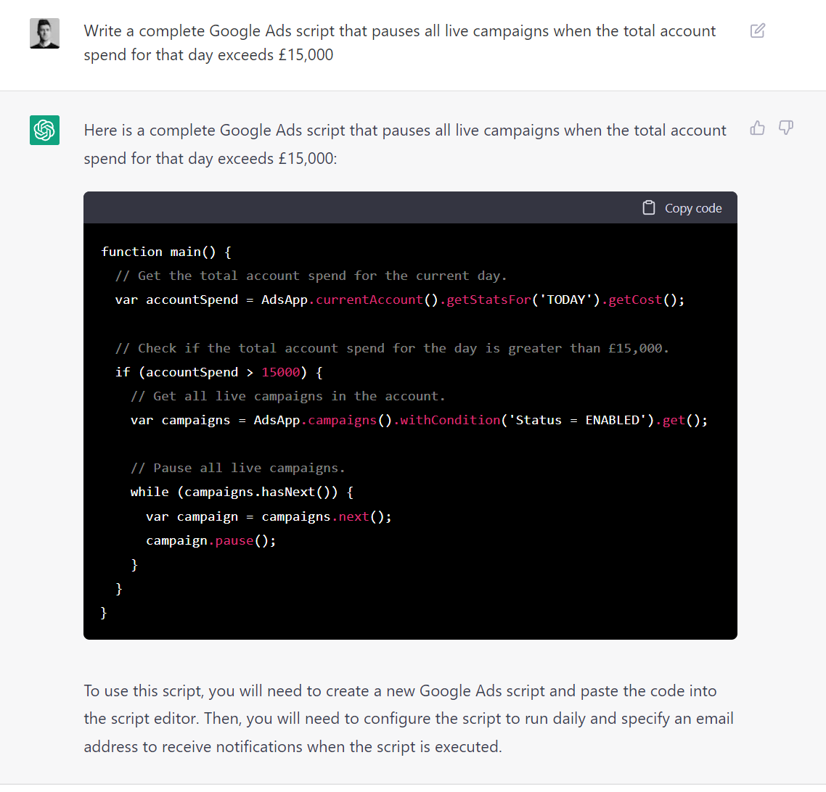
ChatGPT can even generate its own (commented) code from basic prompts, in this example even telling me how I need to schedule the script in the UI.
The accuracy of what you get back varies greatly, especially as your request gets more complex. There is a reason that StackOverflow has temporarily banned answers generated by ChatGPT, as users rush to use the tool to answer queries with mixed success.
As a learning and development tool, being able to express what you want in plain text and have commented code fed back to you is pretty impressive and could make it a lot easier to get your head around technical concepts – as long as you’re aware that what you are getting back may not actually be correct.
Closing thoughts
The days of automating Excel tasks with clunky Visual Basic macros are firmly behind us. It’s important to make sure your team is across developments such as this, as much of what we do as paid media professionals can hugely benefit from various types of automation and the ingesting/processing of data. Chatbots and large language trained models represent a shift away from requiring knowledge of programming languages, to asking in plain language what you want to be done.
Outside of the Paid Media use cases, there is an interesting discussion to have on the impact this could have on Search. If you can have answers served up to you, are you as likely to make a search on Google, and following on from that, clicking ads and driving Google’s revenue?
One of the key differences, of course, is that you are presented back with a single answer confidently (right or wrong), and, if you don’t have any prior knowledge, how can you tell? On the other hand, Google shows you a range of options based on its own ranking signals, including what others are finding useful. Whilst not quite as simple, you are more likely to find the correct answer to your question.
Whilst OpenAI’s technology is amassing a large user base and a lot of interest, this area is not something Google are behind the curve on either – their own large language model (LaMDA) was in the news earlier this year after an engineer claimed it was sentient, and that ChatGPT was “a few years behind Google”.
From the examples above, are there any killer use cases for these models in the world of Paid Media? I don’t think so. These tools do however offer an easy way to sit down and start to harness the power of AI and automation without the need to learn specific programming languages.